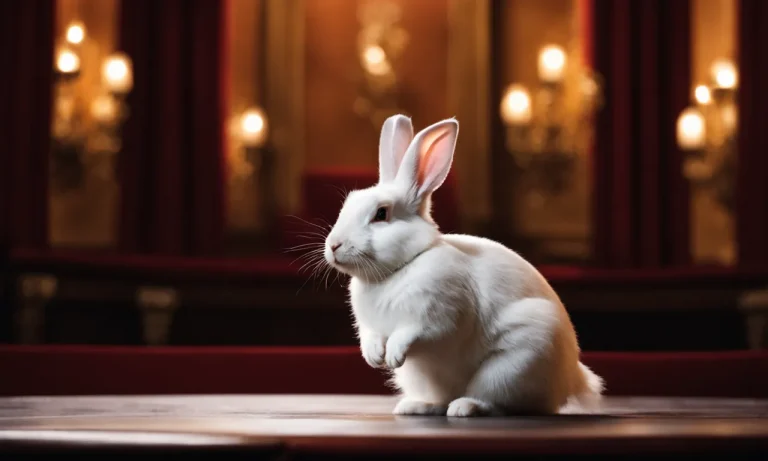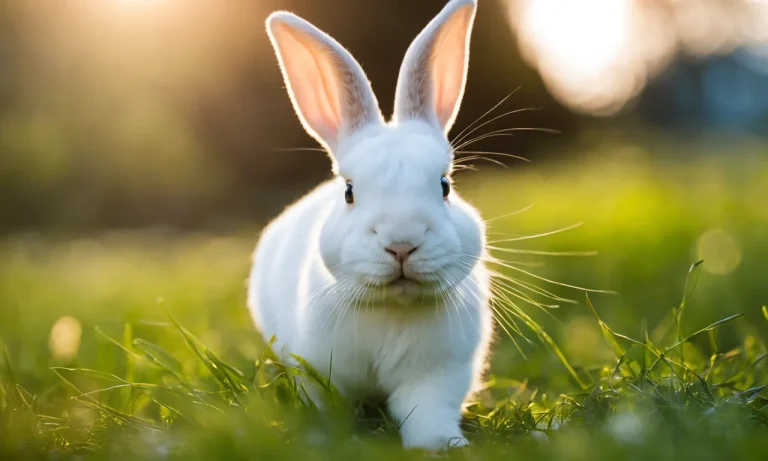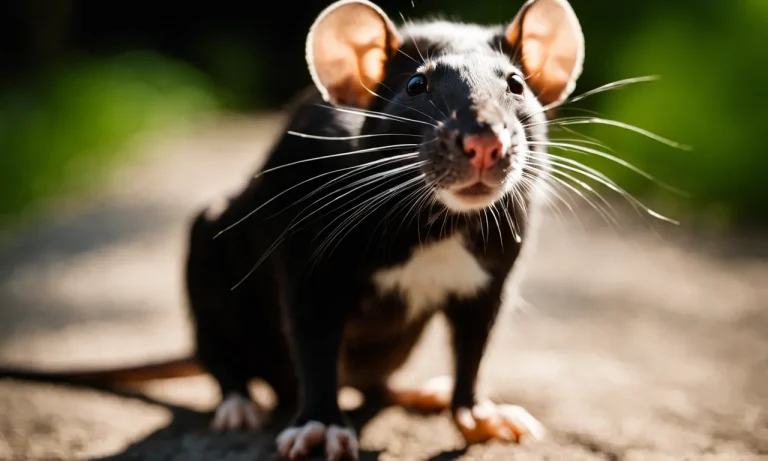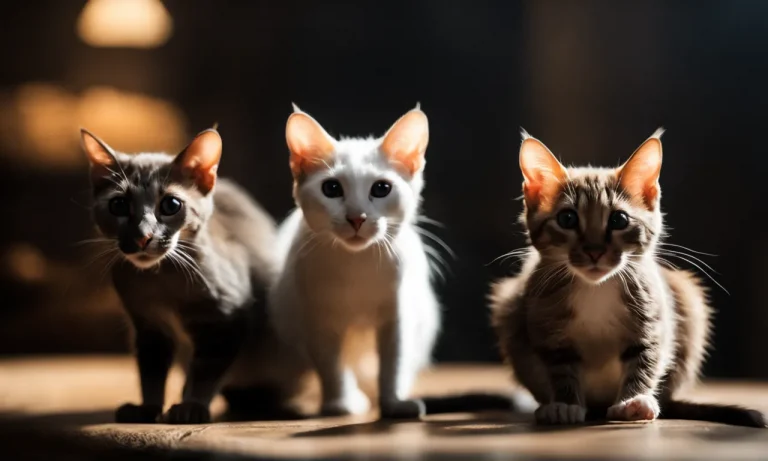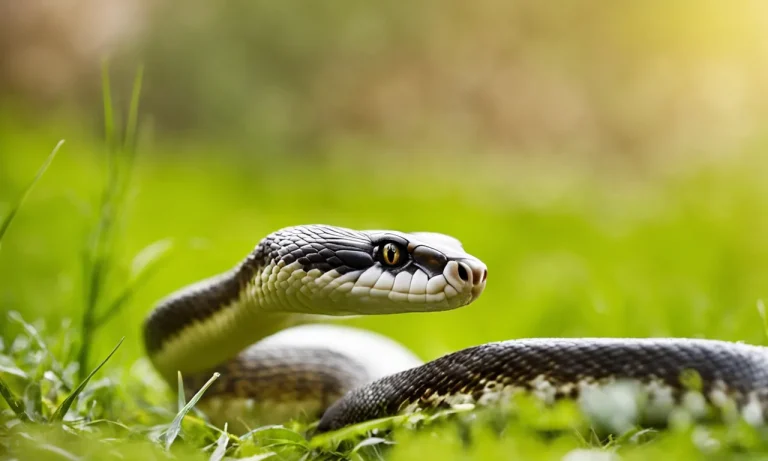If you’re a rabbit owner, you’re probably very familiar with the phrase ‘breeding like rabbits’. Rabbits are known for their enthusiastic mating habits and ability to produce multiple litters per year. But when exactly is peak rabbit mating season?
Read on to find out everything you need to know about rabbit reproduction cycles and how to manage bunny behaviors during breeding season.
If you’re short on time, here’s a quick answer to your question: The main rabbit mating season is between February and September in the Northern Hemisphere, with spring being the peak time for mating and kindling. However, domestic rabbits can breed year-round if conditions are right.
Understanding Rabbit Reproduction
Breeding Seasons Vary By Geography and Daylight
Rabbits, like many other animals, have specific breeding seasons that vary depending on their geographical location and the amount of daylight they are exposed to. In general, rabbit mating season occurs during the spring and summer months when the weather is warmer and food sources are abundant.
However, the exact timing can differ between species and even within populations.
For example, in North America, the breeding season for wild rabbits typically starts in late winter or early spring and continues through the summer. This is because the longer daylight hours and milder temperatures create optimal conditions for reproduction.
On the other hand, rabbits in more equatorial regions may have year-round breeding seasons due to consistent weather patterns.
To determine the specific breeding season for rabbits in your area, it is best to consult with local wildlife experts or organizations that specialize in rabbit conservation. They will have the most up-to-date information on the reproductive habits of rabbits in your region.
Rabbits Are Induced Ovulators
Unlike many mammals, rabbits are induced ovulators, which means that they ovulate in response to mating. This is a unique reproductive adaptation that ensures successful fertilization. When a female rabbit is ready to mate, she will release an egg from her ovary only after copulation has occurred.
This induced ovulation behavior in rabbits is thought to have evolved as a way to increase reproductive efficiency. By waiting to release eggs until after mating, rabbits can optimize their chances of conception.
It also allows them to synchronize their reproductive cycles with environmental conditions, such as the availability of food and shelter.
It’s important to note that not all induced ovulators have the same mating behaviors as rabbits. For example, cats are also induced ovulators, but they do not engage in elaborate courtship rituals like rabbits do.
Understanding these unique reproductive adaptations can provide valuable insights into the fascinating world of animal reproduction.
Nesting Behaviors Precede Mating
Before rabbits engage in mating, they often exhibit specific nesting behaviors as a precursor to reproduction. These behaviors can include digging burrows or creating shallow depressions in the ground, lining the nest with fur or other materials, and displaying territorial marking to attract potential mates.
The nesting behaviors of rabbits serve multiple purposes. First and foremost, they provide a safe and secure environment for the female rabbit to give birth and raise her offspring. Additionally, the act of nesting can be a form of communication between potential mates.
It allows the male rabbit to assess the female’s readiness for reproduction and can help establish a bond between them.
Observing these nesting behaviors can be an exciting sign that rabbit mating season is approaching. If you happen to come across a rabbit’s nest, it is important to remember to keep your distance and avoid disturbing it.
Rabbits are highly sensitive to disturbances during the mating and nesting period, and any interference can have negative effects on their reproductive success.
Signs of Rabbit Mating Season
Increased Aggression and Territorial Behaviors
One of the signs that rabbit mating season is approaching is an increase in aggression and territorial behaviors. Male rabbits, also known as bucks, may become more aggressive towards other males as they compete for the attention of female rabbits, or does.
They may display behaviors such as growling, lunging, and boxing with their front paws to establish dominance. This aggression is a natural instinct during mating season as bucks attempt to secure a mate.
Restlessness and Mounting
Another sign of rabbit mating season is restlessness and mounting behavior. Both male and female rabbits may become more active and restless during this time. Bucks may constantly be on the move, sniffing around and searching for potential mates.
They may also exhibit mounting behavior, where they try to mount other rabbits, objects, or even humans, as a way of displaying their sexual readiness. This behavior is a clear indication that mating season is in full swing.
Nesting Preparations
As rabbit mating season approaches, female rabbits will begin preparing their nests for potential offspring. They will gather materials such as hay, fur, and grass to create a cozy and secure environment for their kits.
You may notice your female rabbit digging burrows or rearranging the bedding in her enclosure. This nesting behavior is a strong indication that she is ready to mate and raise a litter of baby rabbits.
It’s important to keep in mind that these signs may vary depending on the breed and individual rabbit. Additionally, rabbit mating season can occur at different times throughout the year, with some breeds having multiple breeding seasons.
If you are unsure about the specific mating season for your rabbit, it’s always best to consult with a veterinarian or a reputable rabbit breeder for guidance.
Managing Rabbits During Mating Season
Separate Bucks and Does
During rabbit mating season, it is crucial to separate bucks (male rabbits) and does (female rabbits) to avoid unwanted pregnancies. Rabbits are known for their high reproductive rates, and if left together during this time, they can quickly multiply.
By keeping them apart, you have better control over their breeding and can prevent overcrowding or accidental matings.
Spay/Neuter Your Rabbits
One effective way to manage rabbits during mating season is to have them spayed or neutered. This procedure not only prevents unwanted litters but also offers numerous health benefits to your rabbits. Spaying females can eliminate the risk of uterine cancer, while neutering males can reduce aggression and certain reproductive diseases.
Consult with a veterinarian experienced in rabbit care to discuss the best options for your rabbits.
Provide Proper Nest Boxes
When rabbits mate, it is essential to provide them with suitable nest boxes to ensure the safety and well-being of the mother and her babies. Nest boxes should be cozy, well-insulated, and large enough for the mother to comfortably nurse her kits.
Additionally, the nest boxes should be placed in a quiet and secure location to minimize stress on the mother. Properly managing the nesting environment can greatly increase the chances of successful births and healthy offspring.
Watch for Pregnancy Signs
Keep a close eye on your rabbits during mating season and be vigilant for signs of pregnancy. Some common signs include weight gain, nesting behavior, and changes in appetite. If you suspect that a doe might be pregnant, it is essential to provide her with proper nutrition and extra care to support the developing kits.
Regular veterinary check-ups can help confirm the pregnancy and ensure the health of the mother and her babies.
For more detailed information on managing rabbits during mating season, you can visit reputable websites such as The Rabbit House or House Rabbit Society.
Caring for Pregnant Rabbits
When it comes to caring for pregnant rabbits, there are a few important factors to consider. From providing the right diet to recognizing the signs of labor, here is a complete guide to help you take care of your expectant rabbit.
Feeding and Housing Expectant Mothers
During pregnancy, it is crucial to provide pregnant rabbits with a balanced and nutritious diet. This includes a variety of fresh vegetables, high-quality hay, and a small amount of pellets. It is important to avoid feeding them too many treats or foods that are high in sugar as this can lead to health complications for both the mother and her kits.
Additionally, pregnant rabbits should be housed in a clean and spacious environment that allows them to move around comfortably. Providing a nesting box filled with soft bedding material, such as hay or straw, will give the mother a safe and cozy place to give birth and care for her kits.
Signs Labor is Approaching
It is essential to be able to recognize the signs that labor is approaching in pregnant rabbits. Some common signs include restlessness, nesting behavior, and loss of appetite. The mother may also become more protective and territorial.
It is important to monitor the rabbit closely during this time and provide her with a quiet and stress-free environment.
If you notice any abnormal behavior or if the mother is showing signs of distress, it is recommended to seek the advice of a veterinarian who specializes in small animals.
Birth and Care of New Kits
Once the mother rabbit goes into labor, it is important to give her space and not interfere unless necessary. Rabbits are usually very capable of giving birth and caring for their kits on their own. However, it is crucial to keep an eye on the process to ensure everything goes smoothly.
After the birth, the mother will clean the kits and nurse them. It is important to provide the mother with a diet high in protein and calcium to support milk production. Keeping the nesting box clean and providing fresh bedding will help prevent any infections or complications.
As the kits grow, it is important to monitor their development and ensure they are gaining weight. If any issues or concerns arise, it is recommended to consult with a veterinarian who can provide guidance and assistance.
Caring for pregnant rabbits requires attention to detail and a nurturing environment. By providing the right diet, recognizing signs of labor, and ensuring a safe and clean environment for both the mother and kits, you can help ensure a successful and healthy pregnancy.
Mating Issues and Complications
Pseudopregnancy
Rabbits are known for their ability to have a false pregnancy, known as pseudopregnancy. This occurs when a female rabbit’s body mimics the signs of pregnancy even though she is not actually pregnant. It can be challenging for rabbit owners to determine if their female rabbit is truly pregnant or experiencing pseudopregnancy.
During this time, the rabbit may show nesting behavior, gain weight, and even produce milk. However, if there are no signs of pregnancy after a few weeks, it is likely a pseudopregnancy. It is important to note that pseudopregnancy is a natural part of a rabbit’s reproductive cycle and typically resolves on its own without any intervention.
Uterine Cancer Risk
Female rabbits that are not spayed have a high risk of developing uterine cancer. As they age, the risk increases significantly. Uterine cancer can be life-threatening for rabbits, and the most effective way to prevent it is through spaying.
Spaying is a surgical procedure that removes the reproductive organs of the female rabbit. By spaying your rabbit, you eliminate the risk of uterine cancer and other reproductive issues. It is recommended to consult with a veterinarian to discuss the best time to spay your rabbit and the potential risks and benefits involved.
Aggressive/Territorial Behaviors
During mating season, rabbits may exhibit aggressive or territorial behaviors. This is especially true for male rabbits as they compete for the attention of a female. Aggression may include growling, lunging, or even biting.
It is important to be cautious when handling rabbits during this time and to provide them with sufficient space and separate enclosures if needed. Keeping rabbits of the opposite sex apart during mating season can help prevent any potential injuries or fights that may arise from territorial behavior.
Mounting/Humping
Mounting or humping is a common behavior observed during rabbit mating season. Both male and female rabbits may engage in this behavior as a way to establish dominance or initiate mating. However, it is important to note that mounting or humping can also occur in non-sexual situations, such as during play or as a form of communication.
If you have both male and female rabbits, it is crucial to monitor their interactions closely to ensure that they are not being overly aggressive or causing harm to one another. If mounting or humping becomes excessive or problematic, it may be necessary to separate the rabbits temporarily.
Understanding the various mating issues and complications that can arise during rabbit mating season is crucial for rabbit owners. By being aware of pseudopregnancy, the risk of uterine cancer, aggressive/territorial behaviors, and mounting/humping, you can better prepare for and address any challenges that may arise.
Remember to consult with a veterinarian for further guidance and advice specific to your rabbit’s needs.
Conclusion
In summary, wild rabbits generally breed between February and September, with spring being peak mating season. However, domestic rabbits may try to breed year-round if conditions are favorable. Keep an eye out for signs of mating behaviors like aggression, restlessness and nesting preparations.
To manage breeding, separate the sexes, spay/neuter rabbits not intended for breeding, and provide proper housing for expecting mothers. With good care and preparation, you can make the rabbit mating season go smoothly for both you and your bunnies.


